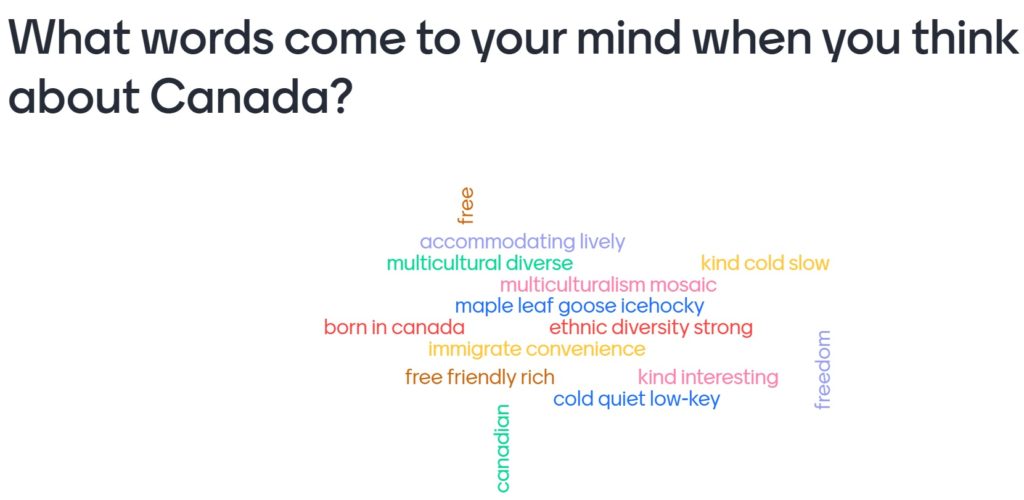
From YouTube-hosted lectures to gamifying the classroom, The Learning Curve is a series showcasing how course instructors in the Faculty of Liberal Arts & Professional Studies are embracing the online learning environment with creative approaches to teaching remotely.
In this week’s instalment, Olga Makinina, an Assistant Professor in the Department of Languages, Literatures & Linguistics, shares how she’s using technology to optimize instruction for students learning English as a second language.
How are you embracing remote teaching?
I would consider myself an early technology adopter. The fast transition to fully remote teaching was the push that I needed to experiment with ideas that I have long wanted to implement in my classroom.
In the ESL courses I teach, I have students from diverse backgrounds with different levels of comfort when it comes to interacting, reading, or speaking in English. I believe that my goal as a course director is both to stretch their comfort zone and help students acquire relevant knowledge and skills that they can then use in other courses to further their academic English skills. To address these goals in the virtual classroom, I have been engaging students in collaborative, multimodal projects that enable them to practice language skills while creating content. For example, students work in groups to summarize and present the contents of assigned course readings by creating Google Slides posters or websites using tools such as Wix and Weebly.
My courses often use peer review sessions to help students reflect on their work and to take away the “formality” of the eClass Workshop peer assessment tool. I’ve also implemented screencast peer feedback by asking students to record their screen and voice (or video) via Zoom.

How has the online learning environment changed your teaching style?
Before COVID-19, my teaching style was all about immediate interaction and flexibility based on students’ reaction or questions. Although I had pre-planned lecture notes and activities, depending on their specific needs, I could instantly make changes and spend more time on a particular concept or modify the homework assignment. With remote teaching, on the other hand, my weekly plans have become more structured because most of my lectures are pre-recorded and learning activities are asynchronous, meaning that some students might choose to work on them the night before the deadline.

In this new teaching landscape, I’ve found using a set of “code” words, colors and images to structure the weekly sections on eClass to be particularly useful. In my classroom, I have multiple subsections: Read & Reflect, Watch & Reflect, and Write. Posing reflective questions to students is another teaching technique that I’ve implemented to engage students and assess their learning. I typically post a short anonymous questionnaire at the end of each thematic unit that includes three questions: 1) What have you learned during these lessons? 2) What would you like to know more about? What was not clear? and 3) What do you wish would have been different about these lessons?
What has been the biggest challenge of remote teaching?
ESL classes are relatively small and as such, they involve teaching tasks and activities designed to enhance interactive components. Consequently, student learning success greatly depends on their active engagement and participation. In the situation of remote teaching, many of my students are joining their virtual classroom from different time zones and some might be unable to attend synchronous sessions. As a result, there are less opportunities for spontaneous interaction, so to address this challenge, I routinely incorporate activities that engage students in conversation (e.g., asking questions and commenting on each other’s posts). The eClass Glossary and Forum tools work great, and to stimulate discussion, I ask students to relate the course content to their life experiences and culture. For instance, for one of the glossary entries, students wrote about a historical figure or famous person in Canada who shares their ethnic and cultural background.
Remote learning also made it difficult to gauge students’ understanding of course material. Unless a student is pro-active in voicing their questions and concerns via forums, chat messages or e-mail, I usually have no way of knowing whether they’re on track with course content or if they are benefiting from the learning activities. To encourage students to share what’s working for them and why, I use a range of informal feedback tools, such as eClass Feedback, Google Forms or Mentimeter.
What’s something new that you’ve learned from your experiences teaching remotely?
As a die-hard perfectionist, I was quite anxious to begin my first fully remote course. However, I was happy to learn that my students were much more understanding of the remote learning/teaching challenges. Whenever something didn’t go as planned (which is often the case when teaching online), my students were incredibly positive and helpful. Through this unique situation that we’re all in right now, my students and I have been able to bond with one another and have hearty laughs over peculiar Zoom backgrounds and common tech issues. (There may have been a moment where my students said to me, “Prof, you’ve been on mute for the past five minutes!”)
Over the course of the term, my students have told me that while dealing with the stress of lockdowns and isolation, they appreciated being able to interact in a supportive environment. In fact, some have told me that remote learning has been an asset because while they were previously too shy to participate during in-person classes, online forums and projects felt less intimidating and gave them an opportunity to express themselves in multiple ways. Student experiences like this have made me realize that although I look forward to being back on campus and seeing my students and colleagues, every cloud has a silver lining.
